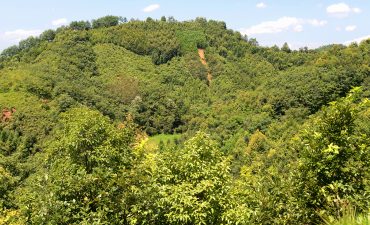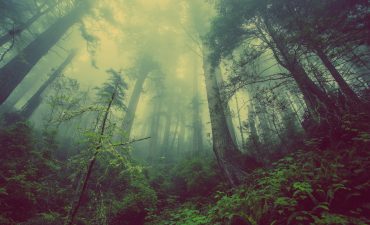Trees bind large amounts of carbon in old age
Even old trees absorb a lot of carbon and thus remove CO2 from the atmosphere. This has now been proven for the first time using trees from a natural forest in Surinam. Old trees thus also make an important contribution to climate protection.
Michael Köhl and his team from the Centre for Earth System Research and Sustainability (CEN) at the University of Hamburg were able to show that old trees absorb between 39 and 50 percent of their total carbon content in the last quarter of their life. Until now, older trees were not considered to be very effective in this respect. It is true that over the years they store the stored carbon (C) permanently in trunks and branches. However, it was unclear whether they would be able to absorb new C significantly.
The team investigated 61 trees of three species aged between 83 and 255 years. They originate from an area of untouched rainforest in Surinam. The thickness of the growth rings was used to calculate the annual growth. Köhl then calculated the net weight, i.e. the biomass, of each tree from the height and diameter. Half of this consists of carbon. In combination with the annual rings, it is possible to determine at what age the tree absorbed how much carbon.
Conclusion: In untreated mixed forests with old and young trees, the plants can decompose CO2 from the atmosphere into old age. The tropical trees studied are extremely productive into old age. „The results can be transferred to European trees,“ says Köhl. „Even if the forests are very different. The new study clearly shows that (in the tropics) each tree grows individually. Growth and size are not so much dependent on age as on chance and favourable conditions.
Comment
The results show that age group management is no longer up to date. For climate protection and species diversity it therefore makes sense to convert areas with managed forests back into natural forests or to strive for ecological management with so-called reference areas (areas that are not farmed and may develop naturally). Natural forests offer good, diverse growth conditions and the trees can bind CO2 from the air for longer. If we transfer the results to Europe, a frequent argument can now be refuted: Not only young trees bind CO2, but also old, large trees bind a lot of carbon dioxide until the end of their life cycle.
Source
Köhl M, Neupane PR, Lotfiomran N (2017) The impact of tree age on biomass growth and carbon accumulation capacity: A retrospective analysis using tree ring data of three tropical tree species grown in natural forests of Suriname. PLoS ONE 12(8): e0181187.


